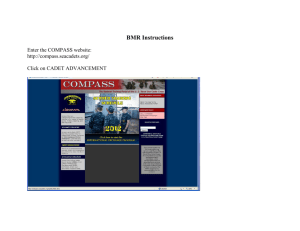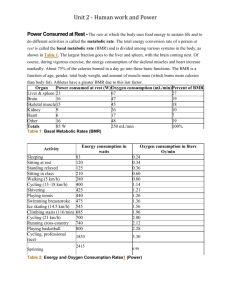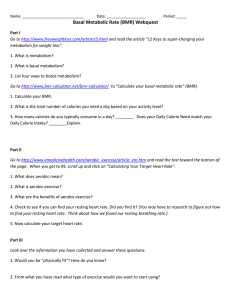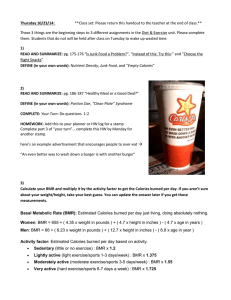M etabolic rate (MR ) Ambient temperature (Ta)
advertisement
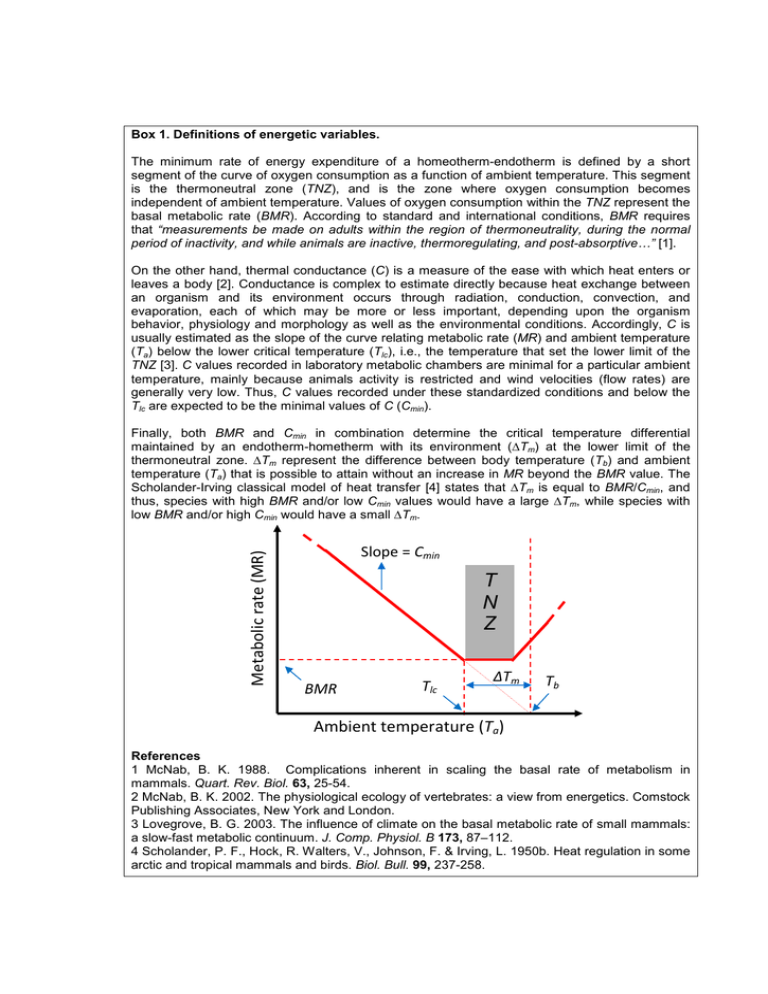
Box 1. Definitions of energetic variables. The minimum rate of energy expenditure of a homeotherm-endotherm is defined by a short segment of the curve of oxygen consumption as a function of ambient temperature. This segment is the thermoneutral zone (TNZ), and is the zone where oxygen consumption becomes independent of ambient temperature. Values of oxygen consumption within the TNZ represent the basal metabolic rate (BMR). According to standard and international conditions, BMR requires that “measurements be made on adults within the region of thermoneutrality, during the normal period of inactivity, and while animals are inactive, thermoregulating, and post-absorptive…” [1]. On the other hand, thermal conductance (C) is a measure of the ease with which heat enters or leaves a body [2]. Conductance is complex to estimate directly because heat exchange between an organism and its environment occurs through radiation, conduction, convection, and evaporation, each of which may be more or less important, depending upon the organism behavior, physiology and morphology as well as the environmental conditions. Accordingly, C is usually estimated as the slope of the curve relating metabolic rate (MR) and ambient temperature (Ta) below the lower critical temperature (Tlc), i.e., the temperature that set the lower limit of the TNZ [3]. C values recorded in laboratory metabolic chambers are minimal for a particular ambient temperature, mainly because animals activity is restricted and wind velocities (flow rates) are generally very low. Thus, C values recorded under these standardized conditions and below the Tlc are expected to be the minimal values of C (Cmin). Metabolic rate (MR) Finally, both BMR and Cmin in combination determine the critical temperature differential maintained by an endotherm-hometherm with its environment (∆Tm) at the lower limit of the thermoneutral zone. ∆Tm represent the difference between body temperature (Tb) and ambient temperature (Ta) that is possible to attain without an increase in MR beyond the BMR value. The Scholander-Irving classical model of heat transfer [4] states that ∆Tm is equal to BMR/Cmin, and thus, species with high BMR and/or low Cmin values would have a large ∆Tm, while species with low BMR and/or high Cmin would have a small ∆Tm. Slope = Cmin T N Z BMR Tlc ∆Tm Tb Ambient temperature (Ta) References 1 McNab, B. K. 1988. Complications inherent in scaling the basal rate of metabolism in mammals. Quart. Rev. Biol. 63, 25-54. 2 McNab, B. K. 2002. The physiological ecology of vertebrates: a view from energetics. Comstock Publishing Associates, New York and London. 3 Lovegrove, B. G. 2003. The influence of climate on the basal metabolic rate of small mammals: a slow-fast metabolic continuum. J. Comp. Physiol. B 173, 87–112. 4 Scholander, P. F., Hock, R. Walters, V., Johnson, F. & Irving, L. 1950b. Heat regulation in some arctic and tropical mammals and birds. Biol. Bull. 99, 237-258.
